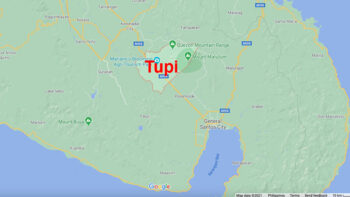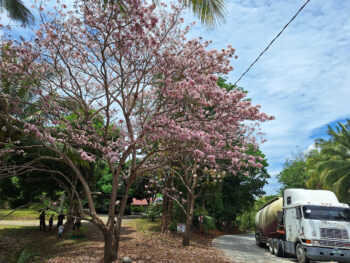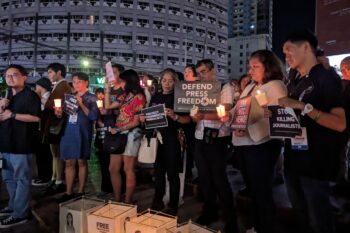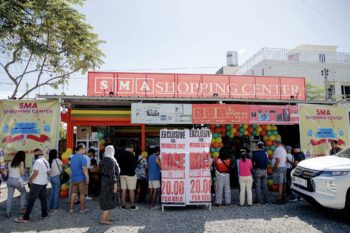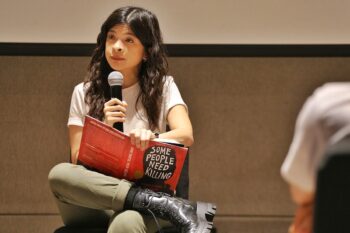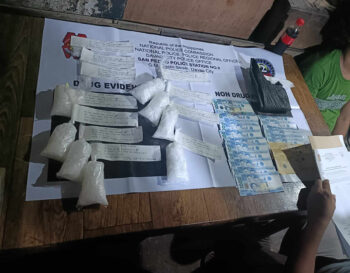DAVAO CITY (MindaNews / 20 September) — A recent initiative to aggressively push for the inclusion of Mindanao’s identities, cultures, politics, languages, folkways, tales, as well as traditional conflict resolution systems, trading practices, family relations and, finally the concept of peace and development into the Philippines’ formal and non-formal educational engagements has just taken off with a proposed roadmap. This has been undertaken through the joint collaborative efforts of the ForumZFD (Forum Ziviler Friedensdienst) and Ateneo de Davao University’s Al Q’alam Institute. The roadmap was presented to an audience of Moro, Lumad and migrant stock scholars from the academe, staff members of government agencies and civil society organizations and media at ADDU last September 17-18, 2019.
As I listened to the deliberations of this event, the words of the poet T.S. Eliot came to mind. His words – “We shall not cease from exploration, and the end of all our exploring will be to arrive where we started and know the place for the first time.” There is a quote that parallels the words of T.S. Eliot and all of us Filipinos know this by heart. These are Rizal’s words: “ang hindi marunong lumingon sa kanyang pinanggagalingan ay hindi makakarating sa kanyang paroroonan”. The Technical Working Group as convened by the forum ZFD and Al Q’alam is to be commended for having presented this Road Map to us.
This road map is but one more attempt at an exploration and seemingly as we arrive at this particular juncture of our journey, there is a greater light in being able to truly understand who we are as Mindanawons and what is Mindanao all about and perhaps – for the first time – have a deeper insight into our quest for an identity which was not attainable in the distant and not-so-distant past especially the colonial and neo-colonial times.
For truly, there have been rivulets, brooks and streams that have merged into rivers as deep and wide as the Agusan River ending up in the vast lakes that constitute this place known as Mindanao, otherwise known as Land of lanao, danao, ranaw or lakes.
From way back the pre-conquest period of our Mindanawon indigenous ancestors whose beliyans and baylans have chanted the epic stories including that of Nalandangan of the Talaandigs, the Guman and Keboklagan of the Subanens, those of Tuwaang and Agyu of the Manobo Ulahingan, the Todbulul of the Tboli and especially the Darangen of the Maranaws, remind us Mindanawons today that there have always been stories etched in the memories of our ancestors which are part historical narratives, ethnographic texts, indigenous literature and magical folktales.
Power of policies
When oral languages – most of whom trace their origins way back to the Austronesians migration movements from south China through Taiwan and the rest of island SouthEast Asia – gave way to the colonial period’s need to put data and information into written words, the narratives became texts. Written from a colonial perspective, naturally they privileged the gaze of the colonial master pejoratively interpreting what they saw and experienced in our societies which they labeled pagan, primitive and wild. The colonial master then wrote about us and that began to erode our capacity to speak in our own voices, as if we returned to the legend of the first Tbolis who couldn’t speak until the god of thunder helped them speak up.
During the American occupation, this process of silencing us persisted while those who held us captives produced and reproduced images and descriptions of how we are projected to the world. This was by way of ethnographic and historical studies and even exhibits of human bodies and cultural artifacts as that one held in the St. Louis World’s Fair in Missouri in 1904 – helped to perpetuate the myth of us being “little brown Americans” – the term used by the first US Civil Governor in the Philippines, William Howard Taft in 1902. And we rewarded him by naming a major street in Manila in his honor.
As Ms Bebot Rodil said during the forum, she has since realized the power of policies. Why the policy regarding what language to privilege in this ex-American colony would be English. Which is why we speak a foreign tongue in the most important institutions operating in our country from schools to corporate and government offices. Why the policy of opening up Mindanao to the homestead resettlement program led to the fact that the majority of today’s Mindanao (whose population is roughly 30 Million) are migrant stock. Why the American policy of integrating the Moro Province into the imagined Philippine Republic (versus the other option to grant it independence) led to rebellions in contemporary history.
Power relations
But from the discourse theory of Michel Foucault, we understand that policies arise out of the formation of discursive field or a system of power relations producing domains of objects and rituals of truth.
From the Spanish to the American regimes and persisting up to the days after the birth of the Republic – giving rise to a nation-state whose power-relations are dominated by the elite circles ensconced in the powerful eco-political circles based in Manila – the privilege of telling the historical truth has belonged to only a small intellectual elite that demanded “isang bansa, isang wika, isang diwa.”
In both the discourses that arose within this colonial mindset and the corresponding State policies naturally pushed Mindanao further towards the periphery. In budgetary allocations for education, infrastructure, health and social services, only a pittance has trickled down to the south. And its citizens, not just the Moro and Lumad peoples, but also the poor among the migrant settlers have had no choice but wait for the benevolence of a Manila imperialist hegemony to reach their shores and especially the uplands.
Discourse as defined by Foucault, refers to “ways of constituting knowledge, together with the social practices, forms of subjectivity and power relations which inhere in such knowledges and relations between them. Discourses are more than ways of thinking and producing meaning. They constitute the ‘nature’ of the body, unconscious and conscious mind and emotional life of the subjects they seek to govern.”
Colonization of the lifeworld
But as we know, power relations in our society arises in a situation which in the words of the German philosopher, Jurgen Habermas refers to as the colonization of the lifeworld by the system.
As we have Germans in our midst in this gathering, it is most appropriate that we refer to the communicative action theory of their paisano. Sumala ni Habermas, ang pagdominar kuno sa atong inadlaw-adlawng kalibutan diin kita nagapuyo isip mga lumulupyo, ug nga kining pagsakop gihimo niadtong sistema sa pang-ekonomiya ug politika maoy hinungdan, sa daghan natong mga suliran karon. Ug kini nagsumikad sa bisan unsang kahigayonan diin ang naghupot og gahum maoy magbuot unsay mahitabo sulod sa nagkadaiyang mga institusyon sa sosyedad. Dili lang kini himoon sa mga langyaw sama sa mga Katsila ug mga Kano – nga posibleng mahitabo sa umaabot kung ang China atong tugtan nga mo-colonize kanato kay nagsugod na sila sa West Philippine Sea – apan mga Pinoy sab nga sakop sa oligarkiya o labing taas nga pamunuan daku sab og gahum nga himoon kita nilang itoy-itoy lamang.
And look at how power plays out in terms of the lifeworld’s colonization. The colonizers will assume the power of naming names and controlling both the content and method of story-telling. From way back the Spanish period to the American occupation to the push for globalization today, we can make a list of all that which we have lost due to a power relations where the elite has full force over the discourses.
First we lost our indigenous names and those constituting our habitat. During baptisms done by the friars we discarded our indigenous names in favor of names of saints and later we shifted to names of Hollywood movie stars. Same as the names of our settlements, towns, provinces, as well as trees, rivers and mountains.
Eventually we lost our indigenous belief systems as Christianity entered our domain. In the process, we discarded our rituals of healing, thanksgiving and seeking favors from the spirit world and thus lost our chants, music and dances. Eventually we lost the memory of our ancestors embedded in our myths and epic stories, which constituted our own forms of historical narratives. History books codified and published tended to only provide a voice to the victors, and the vanquished not only lost their place around the table but also their voices. So for a long while, Filipino students took up history taught from the colonial and Manila-centric perspective.
Culture of resistance
Fortunately, not all is lost. Some remnants of the indigenous memories and lifeways were retained by the Lumad in the isolated uplands reached by colonizers. However, practically all upland indigenous territories today can already be reached by the technologies of the lowlands that have continued to erode indigenous cultures and languages.
Fortunately, discourses are also a “form of power that circulates in the social field and can attach to strategies of domination as well as those of resistance.” Despite attempts to downplay the culture of resistance of our ancestors, somehow most history books still refer to the hundreds of rebellions across the colonial periods from Lapu-lapu to Tamblot, from Sultan Kudarat to Datu Bago and Mangulayon, Leon Kilat to Papa Isio, from Tandang Sora to Gabriela, from Mabini to Rizal and of course the Philippine Revolution waged by the Katipunan as led by Andres Bonifacio.
There has also been resistance in the field of academic scholarship, thanks to post-colonial and post-structuralist theories that have championed history from below, weapons and tactics of the weak, the view from the periphery, the voices of the oppressed.
And this has been clearly seen in the assertion of Mindanao histories and studies, as now articulated by the TWG RoadMap. Why history: Because, in the words of the philosopher George Santayana – “Those who do not remember the past are condemned to repeat it.” And the novelist Maya Angelou posits that “the more you know of your history, the more liberated you are.”
The power of story
History is of course the telling of stories of the past with the view of parceling lessons to guide us for the future. There is no question that stories are powerful. The author Jeff Goins wrote: “I believe in the power of story. Story is where we came from. Story is where we’re going. Story is what connects us and binds us to each other. It is in the story of humanity, amongst love and fear and failure, that we make meaning of our lives. Story is what defines us and sets us apart. It’s what allows us to connect with each another, to truly know and be known.”
There is even a scientific explanation for this. Neuroscientist Paul Zak, author of The Moral Molecule: The Source of Love and Prosperity, discovered through his research that well-told stories release oxytocin, the neurochemical that tells the brain it’s safe to trust someone. Oxytocin is often called the “love hormone” because of its role in forging human connections, and creating empathy.
In the last episode of The Game of Thrones the character Tyrion Lannister announced who he thought should be their King. According to Tyrion, Bran Stark has a special power that would make him a great ruler as he was the keeper of the kingdom’s stories. “What unites people?” Tyrion asked. “Armies? Gold? Flags? No. There’s nothing in the world more powerful than a good story. Nothing can stop it. No enemy can defeat it. And who has a better story than Bran the Broken? The boy who fell from a high tower and lived. He’s our memory. The keeper of all our stories. The wars, weddings, births, massacres, famines, our triumphs, our defeats, our past. Who better to lead us into the future?”
Momentum
Lately, there has arisen a social movement to give birth to a Mindanao Studies construct that would impact academic circles, government policy, NGO engagements and even corporate social responsibility initiatives. Carol and I and a few others mentioned some of these yesterday. I myself have really been surprised at how the momentum has built up since 2001 at the UGAT Assembly in Samal Island. Some of these included the following: 2002: The Tri-People Commission of MINCODE came up with a Mindanao History Project by convening a group of historians. In 2003, there surfaced the Annotated bibliography of Mindanao studies, a project of the Mindanao Studies Consortium Foundation, Inc. (MSCFI). In 2007, the first Mindanao Studies Conference was convened which issued the “ Checkpoints & Chokepoints: Learning from Peace and Development Paradigms and Practices in Mindanao.”
In 2015, a group of 21 scholars of the MSU System released the History of Filipino Muslims and other Indigenous Peoples of MINSUPALA. In 2017 the Ethnology Division of the National Museum came out with the first draft of “Lumad Mindanao.” This year, Mindanao Reader of ADMU and a Mindanao Social History of ADDU-Anthropology Dept. began to take shape. And now the TWG RoadMap.
Note that perhaps the first Mindanao-Sulu Bibliiography was W.E. Retana’s in 1894 which is included in Alfredo Tiamzon’s “Mindanao-Sulu Bibliography published in Davao City in 1970.
Through the deliberations of this gathering, I was reminded of my own life trajectory which embodies the poetic words of T.S. Eliot. Exploring a world that was expanding as I reached high school, partly because I had greater exposure to books, I was always in awe whenever I entered the library. But I was merely a consumer then of books produced by others, written mainly by foreigners who had never set foot in my hometown. I had never imagined then that the stories of those living in my hometown could find their way to a book that I could read. Never did it also occur in my mind that, one day, I might be able to write a book myself. The myth that persisted then was that small-town folks had no capacity to write a book. Thus, I never thought that in my adulthood I would enter into this kind of exploration which only evolved in my 30s.
But through these years of such explorations, I have faced all kinds of difficulties and frustrations. But through it all, I have never lost heart that a day will come when we here in Mindanao could reach this level of exploration.
It fills me with great hope that today we might finally arrive at that place when we can take pride in the fact that we can now reclaim the voices of our past ancestors. And in the process make sure that their memories that are now our own can then be passed on from generation to generation of Mindanawons who also will need to know the same place for the first time in their lives.
[Redemptorist Brother Karl Gaspar delivered this keynote address at the 2nd Conversation on Mindanao Histories and Studies on September 18, 2019 at the Ateneo de Davao University.
Gaspar is a professor at St. Alphonsus Theological and Mission Institute (SATMI) in Davao City and a professor of Anthropology at the Ateneo de Davao University. Gaspar is the most prolific Mindanawon book author, having written at least 22 books since 1985, including “Desperately Seeking God’s Saving Action: Yolanda Survivors’ Hope Beyond Heartbreaking Lamentations,” two books on Davao history, and “Ordinary Lives, Lived Extraordinarily – Mindanawon Profiles” launched in February 2019. He writes two columns for MindaNews, one in English (A Sojourner’s Views) and the other in Binisaya (Panaw-Lantaw)]

